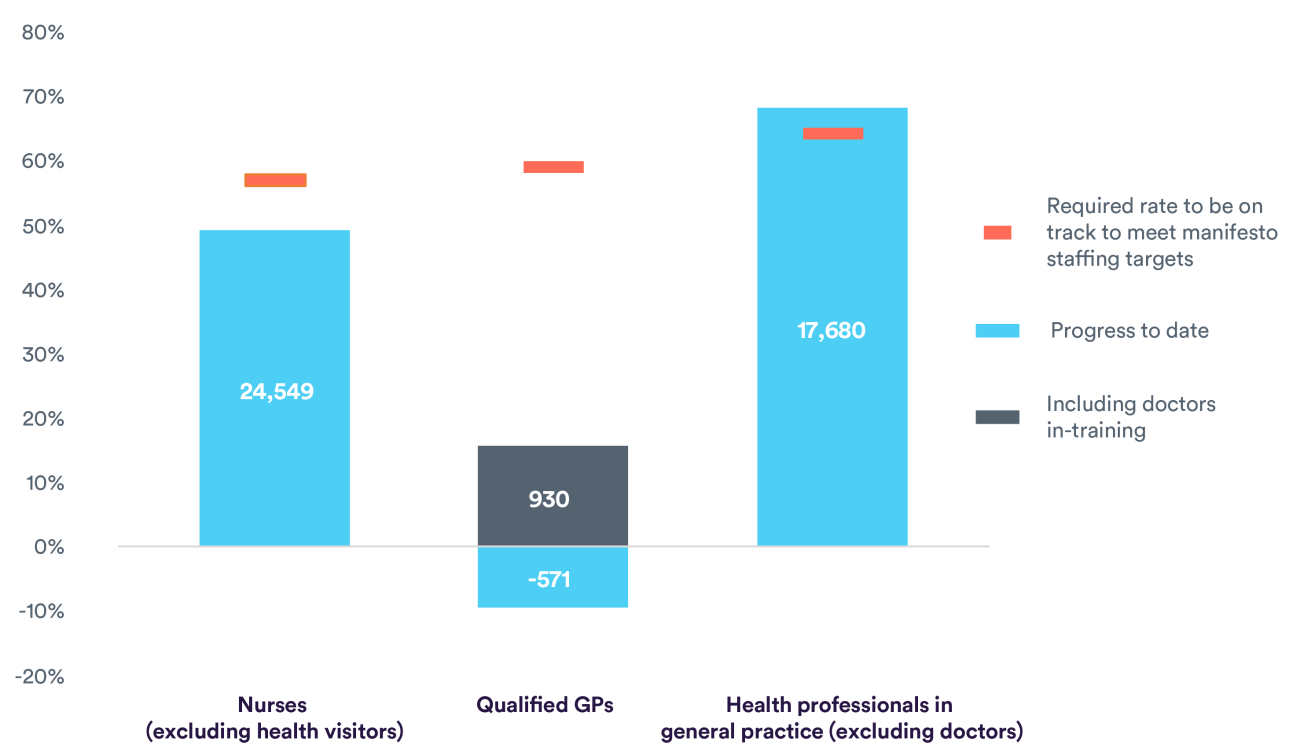Within the next month, Conservative Party members will decide who becomes the new UK Prime Minister. Both remaining candidates have said they would continue the ambitions that Boris Johnson set out in the Party’s 2019 manifesto. Among those was a commitment to increase the number of nurses working in the NHS by 50,000 by the end of this parliament. Pledges were also made for general practice, which included boosting the number of doctors by 6,000 and increasing the number of other primary care health professionals by 26,000.
The latest data shows varied progress for these ambitions. The numbers of health professionals (excluding doctors) in general practice appear to be on course. In nursing, although there has been a significant increase in numbers over the last couple of years, this is still 3,900 below the level required to be on track. Meanwhile, the number of fully qualified GPs has seen a net decrease. Even when including doctors in training, insufficient progress is being made so far to be on course to deliver 6,000 more doctors in general practice by 2024.
But these headline figures don’t tell the full story. The difference in nursing workforce growth varies between regions, with the North East seeing around half (6% since December 2019) that of the South East (11%). There have been different trends across certain specialties or care settings too. For example, while the overall increase in nurse numbers is welcome, the numbers of nurses working in general practice and learning disability services have actually decreased.
While the government has made progress on some of the ambitions shown below, they can ill afford any complacency when it comes to solving the workforce crisis in the health service. In fact, the Health and Social Care Select Committee’s Expert Panel concluded that government progress on workforce planning more generally was inadequate, with current shortages putting patient safety at risk. Given the scale of the backlog of care, there is still a real risk of more staff being overworked, leading to more burnout and more workers leaving the profession.

